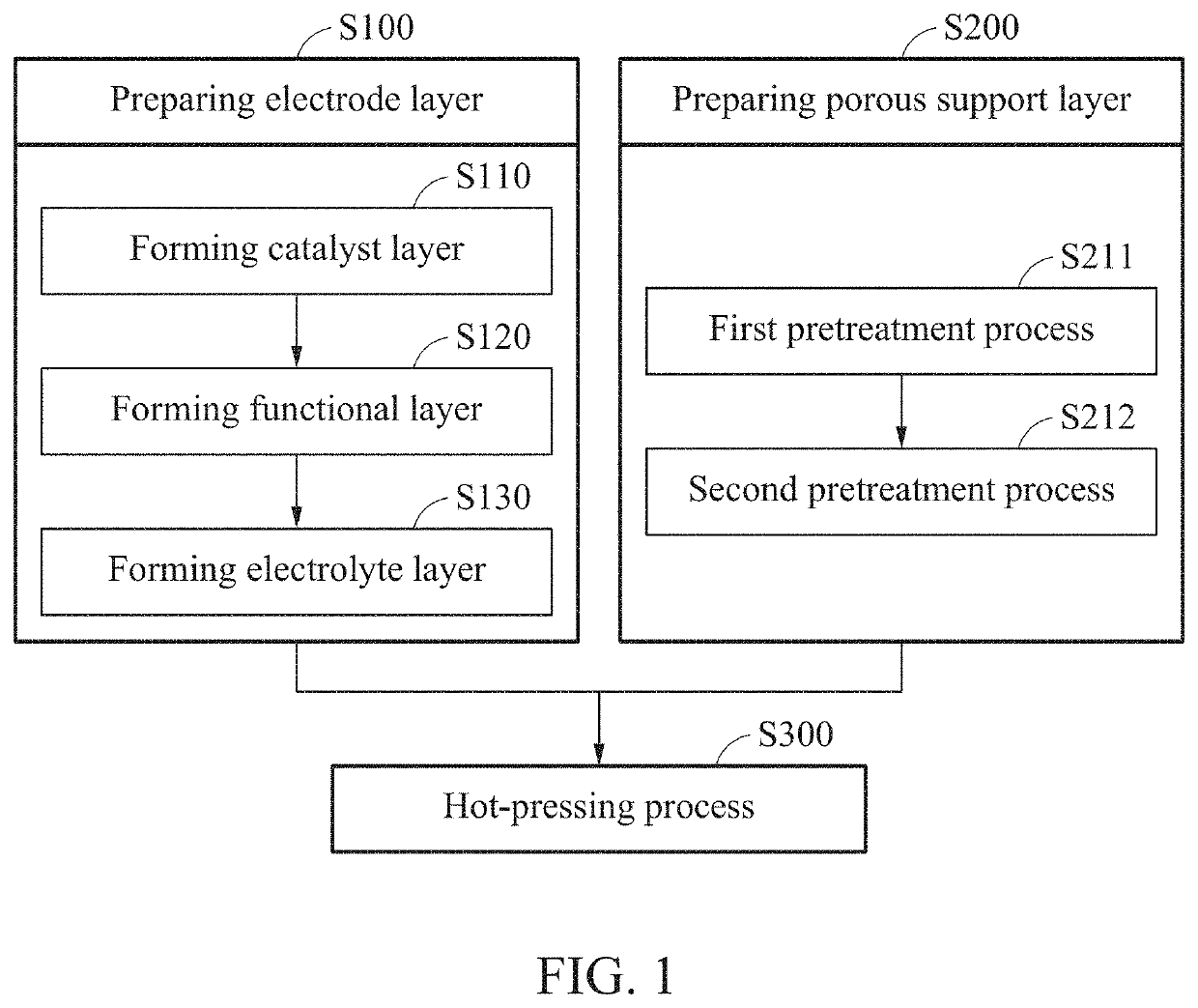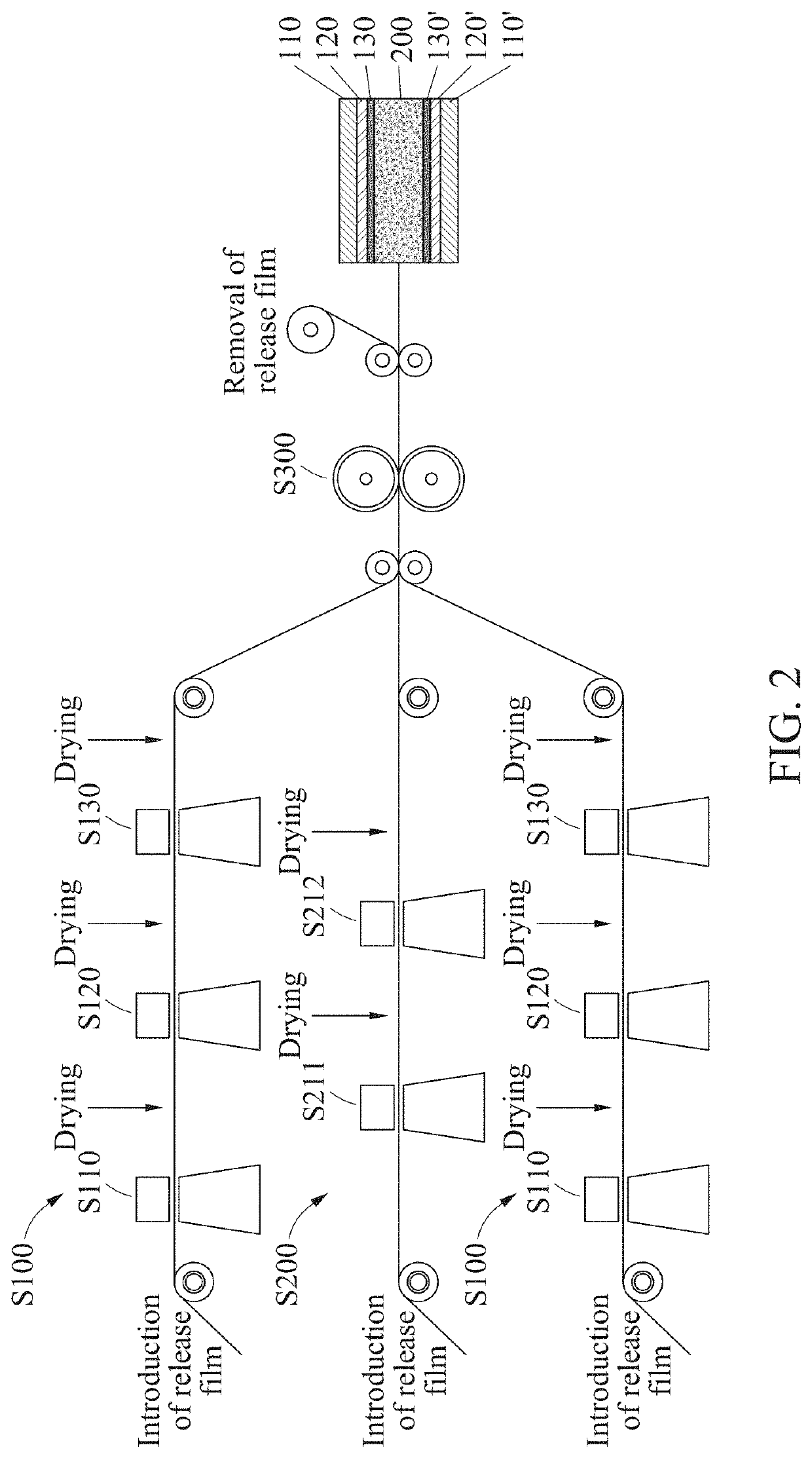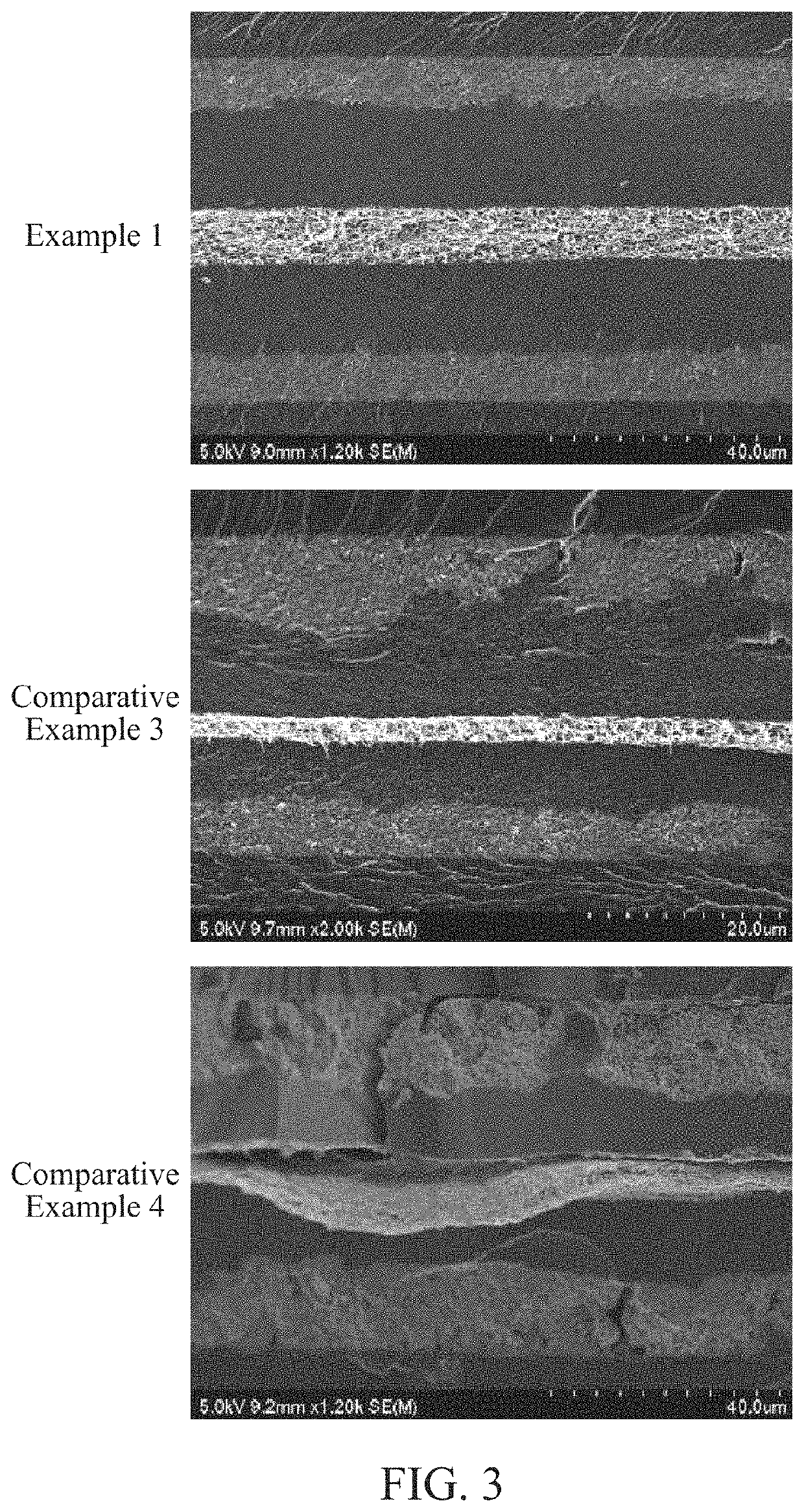Membrane-electrode assembly and method for manufacturing the same
a technology of membrane electrolyte and assembly, which is applied in the direction of fuel cell details, cell components, electrochemical generators, etc., can solve the problems of chemical degradation of the polymer electrolyte membrane, the inability to meet the needs of customers, and the length of the process line, so as to achieve the effect of increasing the penetration of the electrolyte layer, improving physical and chemical durability and performance, and improving density
- Summary
- Abstract
- Description
- Claims
- Application Information
AI Technical Summary
Benefits of technology
Problems solved by technology
Method used
Image
Examples
example 1
acturing-Alcohol Based Support Pretreatment Solution Including a Perfluorinated Reinforced Composite Membrane
[0117]Manufacturing of a Functional Layer Coated Electrode
[0118]According to configuration of the following table 1, a catalyst layer coating composition was prepared by using a carbon-supported platinum catalyst (Pt / C), and a solution including Aquivion resin (Aquivion D83), i.e., an aprotic solvent (N-methyl-2-pyrrolidone, NMP)-based hydrogen ion conductive binder. The catalyst layer coating composition comprises 35 wt % of Aquivion ionomer with respect to the total solid.
[0119]
TABLE 1ComponentsPt / CAquivion solidNMPWt %6.53.590
[0120]10 wt % of a functional layer coating composition was prepared by adding 5 wt % of hexane-1-ol alcohol to an Aquivion resin (Aquivion D83) suspension including 76 wt % of water, i.e., a hydrogen ion conductive binder, adding 2.5 mol % of cerium (III) ions (an antioxidant) and 1 mol % of platinum-supported carbon particles (a gas permeation reduc...
example 2
acturing-Nonaqueous Support Pretreatment Solution Including a Perfluorinated Reinforced Composite Membrane
[0128]Pretreatment of a Polytetrafluoroethylene Porous Support
[0129]After dipping a porous polytetrafluoroethylene (PTFE) support in ethanol for 30 minutes, impurities inside pores of the PTFE support were removed by vacuum-drying the PTFE support at 50° C.
[0130]After substituting solvent of an Aquivion resin (Aquivion D83) suspension containing 76 wt % of water by N-methyl-2-pyrrolidone (NMP) as an aprotic solvent, 2 wt % of a nonaqueous solution composition was prepared by adding 0.4 wt % of 2-(perfluorohexyl)ethanol as an impregnation accelerator to the solvent-substituted suspension. The PTFE support was moisturized by dipping the PTFE support in the prepared solution composition for 10 minutes.
[0131]Manufacturing of a Membrane-Electrode Assembly
[0132]An MEA was manufactured through a roll lamination process having the same conditions as in Example 1 by using a functional la...
example 3
acturing-Nonaqueous Support Pretreatment Solution Including a Hydrocarbon-Based Reinforced Composite Membrane
[0133]Pretreatment of a Polyethylene Porous Support
[0134]After dipping a porous polyethylene (PE) support in ethanol for 30 minutes, impurities inside pores of the PE support were removed by vacuum-drying the PE support at 50° C.
[0135]After dissolving sulfonated poly(arylene ether sulfone) (SPES 50) having a degree of sulfonation of 50% as a commercial hydrocarbon polymer into N-methyl-2-pyrrolidone (NMP) as an aprotic solvent, 2 wt % of a solution composition was prepared by adding 0.4 wt % of 2-(perfluorohexyl)ethanol as an impregnation accelerator to the commercial hydrocarbon polymer dissolved with the aprotic solvent. The PE support was moisturized by dipping the PE support in the prepared solution composition for 10 minutes.
[0136]Manufacturing of a Membrane-Electrode Assembly
[0137]An MEA was manufactured through a roll lamination process having the same conditions as in...
PUM
| Property | Measurement | Unit |
|---|---|---|
| temperature | aaaaa | aaaaa |
| thickness | aaaaa | aaaaa |
| speed | aaaaa | aaaaa |
Abstract
Description
Claims
Application Information
 Login to View More
Login to View More - R&D
- Intellectual Property
- Life Sciences
- Materials
- Tech Scout
- Unparalleled Data Quality
- Higher Quality Content
- 60% Fewer Hallucinations
Browse by: Latest US Patents, China's latest patents, Technical Efficacy Thesaurus, Application Domain, Technology Topic, Popular Technical Reports.
© 2025 PatSnap. All rights reserved.Legal|Privacy policy|Modern Slavery Act Transparency Statement|Sitemap|About US| Contact US: help@patsnap.com



